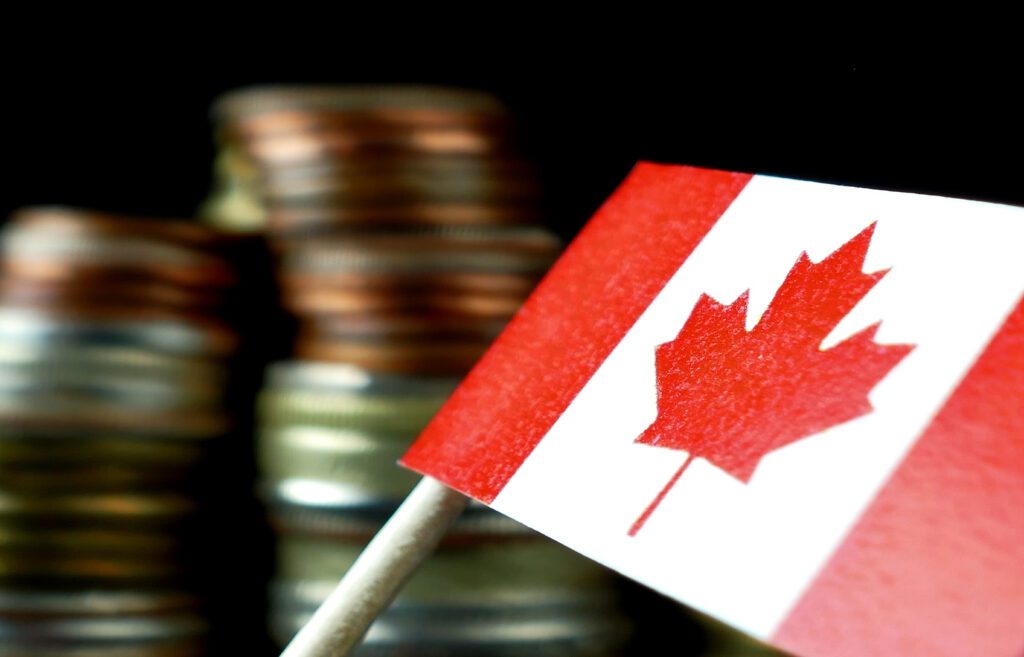Advertiser Disclosure: Many of the companies featured here provide compensation to us. This is how we maintain our free service for consumers. Compensation, along with hours of in-depth editorial research, determines where & how companies appear below.
Harmonized Sales Tax (HST): What Is It?
The harmonized sales tax (HST) in Canada is a consumption tax that is paid by residents and local businesses. The federal goods and services tax and several provincial sales taxes are “harmonizes,” as the word suggests. The HST is used in five Canadian provinces, and a comparable goods and services tax is used in other parts of Canada (GST).
The HST went into effect in 1997. The tax’s proponents contend that by reducing administrative costs, which lowers consumer prices, it increases the competitiveness of Canadian enterprises. The Canada Revenue Agency (CRA) is in charge of collecting the HST and sending the required sums to the participating provinces.
Key Factors

- A fusion of federal and provincial taxes on products and services in five Canadian provinces is known as the harmonized sales tax (HST).
- Except for Ontario, where it is 13%, all participating provinces have a HST rate of 15%.
- Using a single, standard charge across Canada, the HST was designed to simplify the recording and collection of provincial and federal sales taxes.
- HST is not charged on foreign buyers of Canadian items if the products or services are only going to be used outside of Canada.
- While supporters of the tax claim that it ultimately benefits consumers by cutting costs, detractors claim that the HST shifts the tax burden to consumers.
In Canada, Who Pays The HST?
Purchasers pay the HST at the point of sale (POS). The vendor adds the HST rate to the cost of the products and services in order to collect the tax revenues, and then sends the money collected to the Canada Revenue Agency (CRA), the federal government’s tax division. The provincial component of the HST is later distributed to each province’s government by the CRA.
Canadian sales taxes were previously separated between the federal sales tax (GST) and the provincial sales tax before the introduction of the HST in 1997. (PST). There were substantial variations in sales taxes across Canada as a result of the different rates used by each province.
The idea behind the HST was to expedite federal and provincial sales tax recording and collection by consolidating them into a single, uniform rate across the nation. Proponents contend that since it makes businesses’ recordkeeping for sales taxes simpler, it should lower expenses for them (and ultimately for customers).
Except for Ontario, where it is 13%, all participating provinces have a HST tax rate of 15%.
Regrettably, in reality, the HST frequently makes business operations more difficult. Although the HST was intended to replace the existing federal sales tax, the Canadian government made implementation optional. As a result, many provinces chose to continue using their own distinct systems and rates.
As a result, depending on whether the client is headquartered in a HST province or a GST/PST jurisdiction, firms operating across provincial lines or nationally—either in physical locations or via e-commerce—have to contend with variances in tax rates. (The PST can be anywhere between 6% and 9.975%, although the GST is 5% everywhere.) 2
Canada’s Provinces That Use The HST
The harmonized sales tax is used in five of Canada’s thirteen provinces:
- Newfoundland/Labrador (since 1997)
- New Brunswick (since 1997)
- Nova Scotia (since 1997)
- Ontario (since 2010)
- Prince Edward Island (since 2010)
British Columbia, Saskatchewan, Québec, and Manitoba are the remaining jurisdictions in Canada that use both the provincial system and the distinct federal sales tax. Others include Alberta, the Northwest Territories, Nunavut, and Yukon, which only apply the federal goods and services sales tax and do not impose local sales taxes.
In 2010, British Columbia enacted the HST; however, three years later, it was repealed restoring its provincial sales tax system after an estimated 55% of the province’s inhabitants voted against the system.
HST Registering and Collecting
The HST must be collected and remitted by Canadian business owners operating in one of the five participating provinces. If the company generates annual total revenue of $30,000 or more, the owner must open a GST/HST account with the CRA in order to begin collecting sales tax.
When a province joined the HST program, it set its own PST collecting % and synchronized it with the GST. Hence, depending on which of the five provinces a firm operates in, the actual amount of the HST may vary. Initially, the percentage was between 13% and 15%, but now it is 15% practically everywhere.
Owners of so-called small suppliers, or companies with annual revenues of less than $30,000, are exempt from the requirement to collect or charge the HST. Even yet, they are still free to voluntarily register to collect the tax because doing so entitles them to input tax credits on the products and services they buy to run their businesses.
What Goods and Services Are Exempted?
Although the HST is applicable to a wide range of goods and services, some are zero-rated or tax-exempt. A good or service with 0% HST is referred to as zero-rated. Products like basic groceries, publications, and several agricultural and fishing items are among them.
If a foreign buyer of a Canadian product intends to use it only outside of Canada, they are exempt from paying the HST. Visitors to Canada who are not citizens, such as tourists, must pay the HST. They may occasionally be eligible for a HST rebate.
Effects Of The HST On Taxpayers
How the HST affects taxpayers and consumers is still up for dispute.
The HST is being criticized for allegedly shifting the tax burden from businesses to consumers. The HST’s proponents contend that it really decreases taxes. They contend that the HST system cuts company expenses, which in turn lowers the cost of consumer goods and services.
Canada’s Harmonized Sales Tax (HST): How Does It Work?
Purchasers pay the HST at the point of sale (POS). Vendors collect the tax by increasing the cost of products and services by the HST rate. The Canada Revenue Agency (CRA), the federal government’s revenue division, receives the tax they have collected. The provincial component of the HST is later distributed to each province’s government by the CRA.
What Is The HST’s Purpose?
The HST system aims to expedite federal and provincial sales tax registration and collection by consolidating them into a single, uniform levy across the nation.
Is There An HST In The United States?
No, there isn’t a federal sales or value-added tax in the United States. These taxes are imposed in some form by the majority of states, but the revenue generated is not nationally distributed.
Final Thoughts

A fusion of federal and provincial taxes on products and services in five Canadian provinces is known as the harmonized sales tax (HST). Except for Ontario, where it is 13%, all participating provinces have a HST rate of 15%.
To make the recording and collection of federal and provincial sales taxes more efficient, the HST was implemented in 1997. While supporters of the tax claim that it ultimately benefits consumers by cutting costs, detractors claim that the HST shifts the tax burden to consumers.

